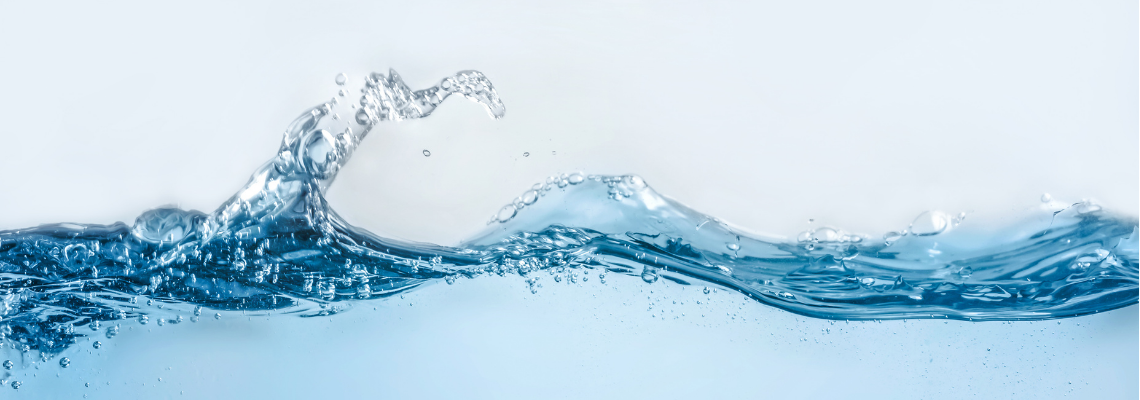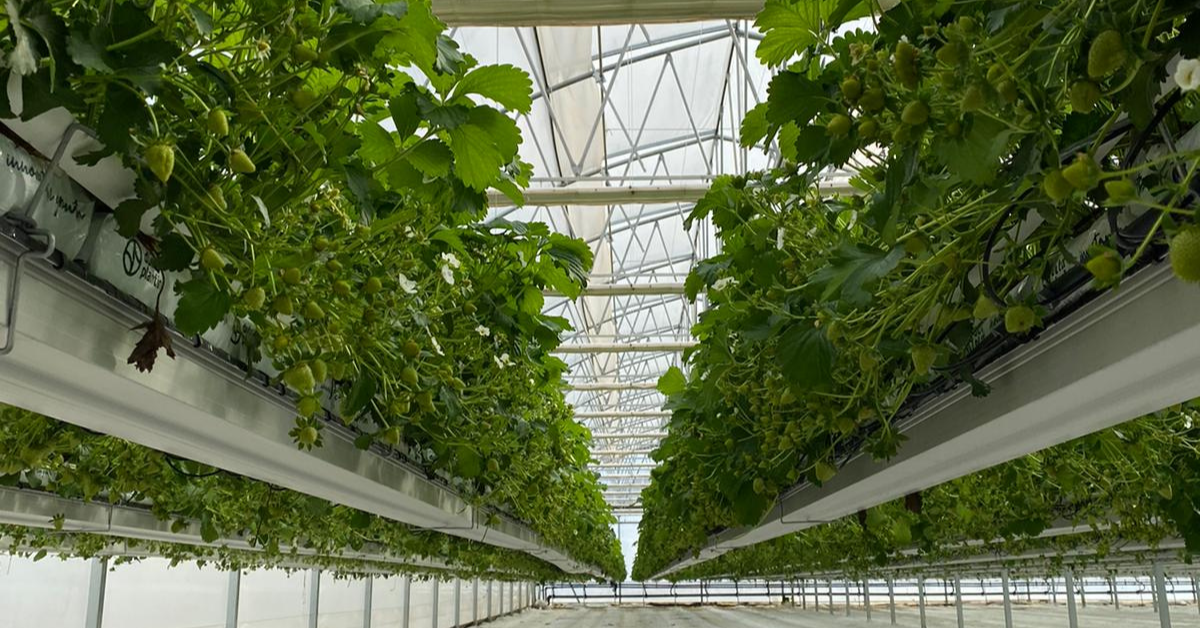Disinfecting drain water: which method to use?
More and more growers all over the world are choosing to reuse the water in their greenhouses. To do so, it is important that the drain water is properly disinfected first. Various methods can be used for this. We list three different options: ultraviolet, ultrafiltration and ultrasonic sound.
Whether it’s because of sustainability reasons, under pressure of legislation, or to save money; water is increasingly being reused within international greenhouse horticulture. The decreasing availability of water with good quality also plays a role in this. But if you want to reuse your drain water in the greenhouse, it is important that the water is first free of bacteria, fungi and viruses. This can be done by means of proven techniques, but also with new methods.
Ultraviolet by Ridder
Ultraviolet disinfection (UV) is considered a very reliable method for removing harmful micro-organisms from the water. This method has been widely used in European horticulture for many years now. In addition, renowned research institutes mapped out exactly which UV dose is required for which type of micro-organism, says Jerre de Blok of Ridder. “There are different types of UV light, each with its own wavelength. UV-C is needed to disinfect water. UV-C with a wavelength of 254 nanometers has the strongest germicidal effect and thus makes it possible to free water from micro-organisms for reuse in the greenhouse.”
UV light damages and breaks down the genetic material of bacteria and fungi. That does not mean that the micro-organisms are directly gone, but it does mean that they are no longer harmful and that they can no longer multiply themselves. Because bacteria do not live long, they will eventually die. “It is good to determine in advance which UV dose is required for your problem. A UV dose of 250 mJ/cm2 is sufficient for tackling viruses in water, including the tomato virus ToBRFV. An exception is the Pepino mosaic virus, which only needs 150 mJ/cm2. If you want to tackle fungi and bacteria only, a UV dose of 100 mJ/cm2 is required.”
The Ridder VitaLite always guarantees the required UV dose while the disinfection process is active, De Blok says. “This is due to the fact that the water flow through the UV reactor is automatically corrected based on the UV intensity measured by the UV sensor. Moreover, the relation between the UV intensity and the water flow has been validated extensively to ensure that every combination of flow and intensity will lead to the expected percentage of the elimination of micro-organisms. First, a collimated beam test with reference bacteria determines the effect of the UV dose on bacteria elimination. Then, a test with reference bacteria in the VitaLite takes place to determine the effect of the water flow and the UV transmittance on bacteria elimination and therefore, effective UV dose. Finally, there are field tests with the VitaLite to verify the effect on native flora in greenhouse drain water. Inside each UV reactor is also a flow plate present. This flow plate affects the water flow and ensures that all micro-organisms receive the same UV dose. This makes the UV more effective and increases the efficiency of the VitaLite: the same UV dose can be guaranteed at a higher flow. For those who want even more security, there are also two taps on the system. This allows you to take samples yourself and send them to a laboratory for confirmation.”
Finally, De Blok indicates that in some cases, UV disinfection is combined with the application of hydrogen peroxide. “When you apply hydrogen peroxide just before UV disinfection, it leads to a process called 'advanced oxidation'. This process helps to break down the organic substances in the water and also reduces the formation of biofilm in the pipes.”
Ultrafiltration by van der Ende
Another proven method is water disinfection by means of ultrafiltration (UF). This technique focuses on the physical removal of pathogens in the water, explains Michiel Brockhus of Van der Ende Group. This is in contrast to the most common applications that mainly focus on destruction. “UF is a process that uses water pressure to separate different substances from membranes. The membranes allow water, ions and small molecules to pass through, while the organisms in the water such as viruses, bacteria, fungi and suspended solids are held back and removed.” According to Brockhus, this makes it an excellent technique for disinfecting water and makes it possible to reuse water and nutrients. “The UF technique has been a proven method for decades and is used worldwide in water treatment situations. We have now optimized this technique for use in greenhouse horticulture.”
With UF membranes, the water is physically cleaned. Anything larger than the pores simply won't fit. As a result, the quality of the filtered water does not depend on the supply water and a stable quality and quantity is guaranteed, explains Brockhus. “Our product, the Kathari, achieves a 99.99% reduction in viruses and fungi and a 99.9999% reduction in bacteria. This physical separation makes ultrafiltration a very reliable method for disinfecting water, all while preserving nutrients.” Important advantage of UF is that it is insensitive to low turbidity of the water. In cases of low T10 values there is still a high level of reduction of viruses and fungi. The Kathari has also been tested on removal of the ToBRFV with excellent results.
The Kathari uses a very durable membrane technology and has a modular construction. This means that it can be supplied in any desired capacity. “For example, the Kathari can also be equipped with pre-filtration and an integrated flushing vessel. In addition to the physical separation of viruses (including ToBRFV), bacteria and fungi and the preservation of the nutrients in the clean water, the operational costs are also low. The energy consumption is quickly 50 to 85% lower than comparable techniques. Because of the competitive purchase price, the UF is a sound investment.”
Ultrasonic sound by Ultramins
A relatively new player on the market is Ultramins, which has developed ultrasonic transmitters to disinfect water. These USAF ultrasonic transmitters send high-power sound into the water, creating pressure waves of up to 2,000 atmospheres. “Algae, biofilm, bacteria, fungi and viruses cannot withstand these high pressures and are therefore compressed, causing the membranes to rupture'', explains Robert de Hoo of Ultramins. “Even persistent viruses such as ToBRFV cannot withstand these high pressures. Field trials have shown that water, which was heavily contaminated with ToBRFV, did not cause disease symptoms in the tomato plants after this water was disinfected by USAF.”
The USAF ultrasonic transmitters from Ultramins disinfect all irrigation water, including the fresh basin water which in most cases now enters the greenhouse without disinfection. “All the water in the basins and silos is treated during the entire period that the water is in these silos or basins. Our transmitters disinfect the water for a long time. This makes it impossible for any germs present to remain alive and pose a threat to cultivation. Germs cannot become resistant to high pressures, so future new viruses or fungi are also effectively combated by this method. Our USAF ultrasonic transmitters operate 24/7 and 365 days a year and require no maintenance whatsoever. Short or longer periods that the units do not work due to maintenance or flushing, therefore, do not occur. This guarantees a constant flow of sufficient, germ-free water.”
Ultramins' technology is offered in simple transmitters for controlling algae in basin water and in double-acting transmitters to neutralize the most stubborn fungi and viruses in water. “USAF ultrasonics is 100% environmentally friendly and comes with a seven-year user warranty,” adds De Hoo. “The transmitters require very little power, which makes a big positive difference for growers compared to other methods, especially in these times.”
Share your horticulture technology stories with us
Do you have an innovation, research results or an other interesting topic you would like to share with the international horticulture technology industry? The GreenTech website and social media channels are a great platform to showcase your stories!
Please contact our Brand Marketing Manager Murkje Koopmans.
Are you an GreenTech exhibitor?
Make sure you add your latest press releases to your Company Profile in the Exhibitor Portal for free exposure.
Have exclusive horticulture technology news delivered to your inbox
The GreenTech monthly newsletter brings you the latest exclusive horticulture technology news and updates about our global horticulture technology trade shows and events.
Join over 32,000 of your peers and receive:
☑ Exclusive commentary from industry leaders
☑ The latest news from the GreenTech team
☑ Stay up to date with all the latest news about our events






